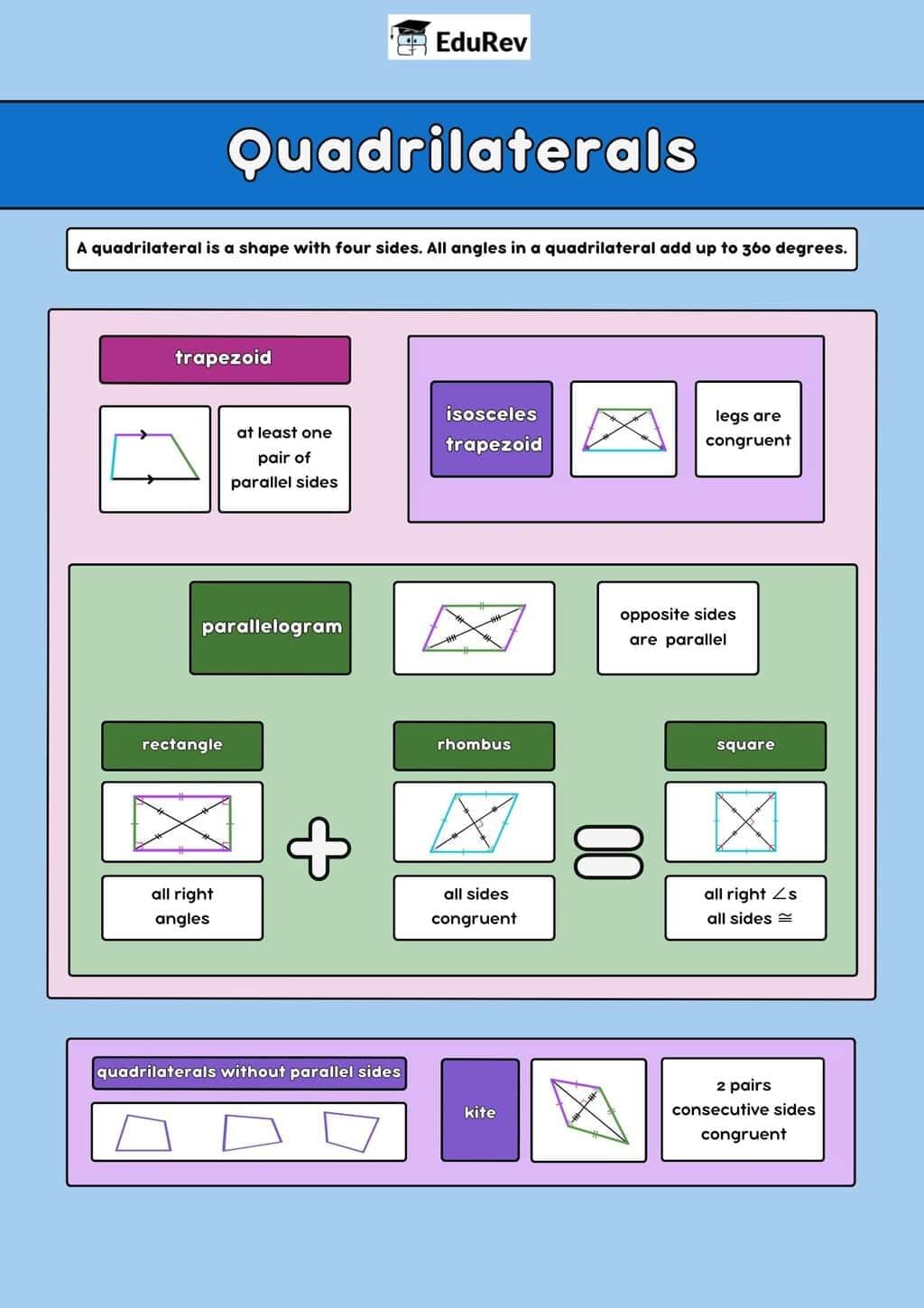Class 8 Exam > Class 8 Notes > Mathematics Class 8- New NCERT (Ganita Prakash) > Let's Learn: Quadrilaterals
Let's Learn: Quadrilaterals | Mathematics Class 8- New NCERT (Ganita Prakash) PDF Download

The document Let's Learn: Quadrilaterals | Mathematics Class 8- New NCERT (Ganita Prakash) is a part of the Class 8 Course Mathematics Class 8- New NCERT (Ganita Prakash).
All you need of Class 8 at this link: Class 8
|
22 videos|133 docs|11 tests
|
FAQs on Let's Learn: Quadrilaterals - Mathematics Class 8- New NCERT (Ganita Prakash)
| 1. What are the properties of quadrilaterals? |  |
Ans. Quadrilaterals have four sides, four vertices, and four angles. The sum of the interior angles in any quadrilateral is always 360 degrees. Quadrilaterals can be classified into various types based on their properties, such as parallelograms, rectangles, squares, trapezoids, and rhombuses, each having specific characteristics.
| 2. How do you classify quadrilaterals? |  |
Ans. Quadrilaterals can be classified based on their sides and angles. They include:
- Parallelograms: Opposite sides are equal and parallel.
- Rectangles: All angles are right angles, and opposite sides are equal.
- Squares: All sides are equal, and all angles are right angles.
- Rhombuses: All sides are equal, but angles are not necessarily 90 degrees.
- Trapezoids: At least one pair of opposite sides is parallel.
| 3. What is the area formula for different types of quadrilaterals? |  |
Ans. The area of quadrilaterals can be calculated using different formulas:
- For rectangles: Area = length × width.
- For squares: Area = side × side.
- For parallelograms: Area = base × height.
- For trapezoids: Area = 1/2 × (base₁ + base₂) × height.
- For rhombuses: Area = (diagonal₁ × diagonal₂) / 2.
| 4. What is the difference between a rectangle and a square? |  |
Ans. The main difference between a rectangle and a square lies in their side lengths. In a rectangle, opposite sides are equal, and angles are right angles, whereas in a square, all four sides are equal in length, and all angles are also right angles. Thus, every square is a rectangle, but not every rectangle is a square.
| 5. How do you find the perimeter of a quadrilateral? |  |
Ans. The perimeter of a quadrilateral is found by adding the lengths of all four sides. The formula can be represented as: Perimeter = side₁ + side₂ + side₃ + side₄. For regular quadrilaterals like squares and rectangles, specific properties can simplify calculations, such as multiplying the length of one side by 4 for squares or using the formula for rectangles (2 × (length + width)).
Related Searches





















